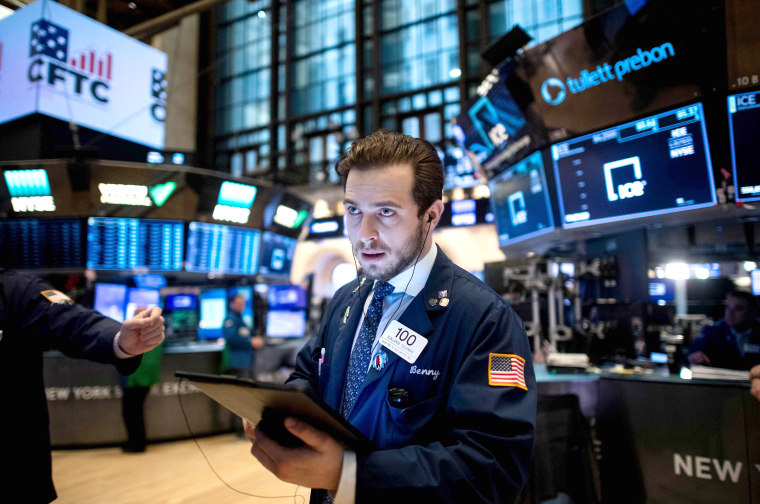The Dow Jones Industrial Average is fewer than 1,000 points away from hitting the 30,000 mark, a symbolically significant benchmark that investing experts say is a reflection of both strong corporate earnings potential — and a little too much optimism.
“Obviously, it’s been a really good fourth quarter of 2019 and a strong start to the first few days of January,” said Darrell Cronk, chief investment officer of Wells Fargo Wealth and Investment Management.
This, in turn, fuels investor expectations that more of the same is on the horizon, particularly as looming geopolitical risks appear to have lessened. “What the market is really in some regards digesting is the fact that at least a piece of the China trade deal is over, the fact that the Iranian tension is coming down and there’s really not too much from a bad news point of view,” said David Frisch, president of Frisch Financial Group.
“The stock market is driven by the aggregate of investors’ expectations about future profitability,” said Lawrence White, an economics professor at New York University's Stern School of Business. Although the Dow perhaps is the most recognizable character in the collective market narrative, White said, he pointed out that professionals view other indices, such as the much larger S&P 500, as a better barometer for gauging economic growth.
“It’s not so much the 30,000 number as much as it is whether or not the market is cheap or expensive once it hits that point,” Frisch said. “Really, what’s more behind it are what the multiples are.”
With banks already reporting red-hot quarterly earnings this week, market observers say there is potential for a bump — or a retreat.
“We walk into this year at close to 19 times forward earnings… the highest we’ve come into a year since 2003,” Cronk said. “We think prices can move higher in 2020, somewhat in lockstep with earnings growth.”
“In about a week, you’re going to have some significant announcements in terms of fourth-quarter earnings and that’s really the much more material number,” Frisch said. “If the earnings are good, the market may continue to have the good news that it needs just to continue to advance.”
Experts also said that an accommodative Federal Reserve has facilitated the current momentum in equities. “The Fed has been accommodating in terms of lowering interest rates. The Fed went from being very concerned about inflation and an over-expanding economy to the economy softening too quickly. They really had a pretty significant turnaround,” Frisch said.
Some experts said they don’t expect a 30,000 Dow to be as significant as previous milestone benchmarks. “Numerically it’s not like going from 9,000 to 10,000,” said Mitchell Goldberg, president of ClientFirst Strategy, pointing out that it takes much bigger moves in terms of points to make the same kind of impact from a percentage standpoint. “I think at this point, as incremental gains becomes smaller and smaller, the incremental enthusiasm becomes smaller and smaller.”
“The Dow 30,000 goal is something that’s been around for probably 15 years,” said Nick Giacoumakis, founder and CEO of New England Investment and Retirement Group.
At these levels, though, experts caution investors against chasing returns or making big portfolio changes. Remember, they advise, that stocks move in both directions.
“There’s a risk that the fundamentals, particularly earnings growth, could disappoint,” Cronk said. “There are risks when you’re not at cheap multiples that the sentiment could change and move back to something more conservative.”
“Stick to your allocation. At these levels of the market, the market is quite richly valued,” Giacoumakis said. “If you chase it, that’s when you’re going to buy securities at too-high levels,” he said — a choice that could lead to losses if subsequent events prompt a retrenchment, he said. “We will start to see a lot of volatility and choppiness as we get closer to the election.”
“I think investors are more concerned about what could bring the Dow back down to 25,000,” Goldberg said, echoing a prediction of volatility. “This year’s going to be a lot more interesting than people had bargained for.”
In spite of the market notching record highs on a near-weekly basis, this should make investors cautious, Frisch said. “The market is historically expensive. There almost seems to be a melt up in the past couple of months… There does seem to be a little bit of euphoria.”
